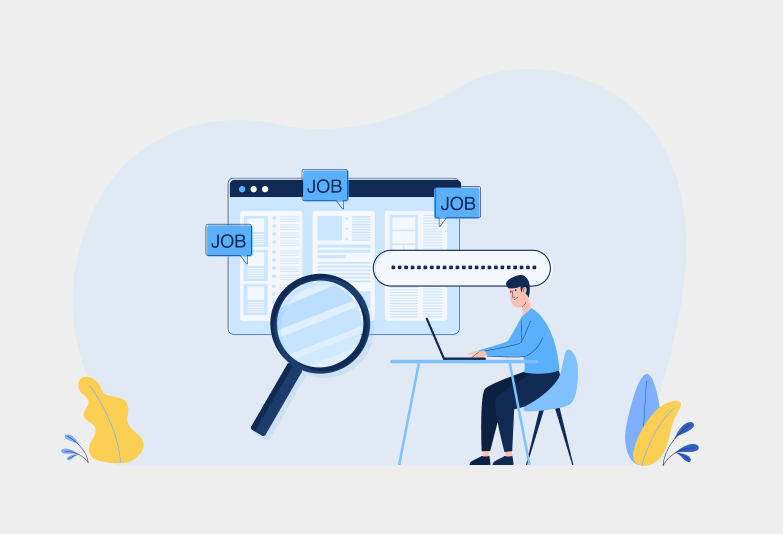Hiring great talent starts with attracting great talent, which isn’t easy without a great job description and a great job posting. But wait. Aren’t job descriptions and job postings the same thing? Well, they’re not. While they may appear similar and are often used interchangeably, they are two terms, each having its own place in the hiring process. Job posting & job description – what’s the difference between the two? The fundamental difference between the two is that a job description emphasizes what an employee has to achieve daily and how success will be measured, and a job advertisement emphasizes why a qualified individual should apply for the job. But, that’s not all! There are various other differences between the two, and this article is just about that!
What Is Job Posting?
A job posting is defined as an official advertisement created by the employer, human resources, or recruiter to alert existing employees or job seekers regarding a job opening within the company. The job posting is mainly classified on:
- Websites
- Organization’s bulletin board
- Blogs
- Print media
- Magazines
- Newspapers
- Industry-related publications
- e-ticker-style signs
- Job portals
- Classified ads
- Job boards
- Social networking sites
- Mobile and browser apps
Types of Job Posting:
The job posting can be broadly categorized into 2 types:
- Internal job posting
- External job posting
The internal job posting is for existing employees who might already have the skills and knowledge needed to fill the open position. Internal job posting saves time and money that would be spent on external interviewing and training. External postings are open to the entire public or targeted segment of candidates. External postings help find talent that possesses skills and experience that are usually not available in-house.
Importance of Job Posting
Job posts are probably the first point of contact that many candidates will have with your organization. They are your first opportunity to attract the best people for your open role. Apart from attracting the right candidates, job posting does a lot more. It aids your recruitment process, enhances your employer brand, and gives you access to a larger talent pool.
What Is Job Description?
A job description is a document that specifies the main duties, skills, qualifications, and responsibilities required to perform a role. An individual who is responsible for overseeing the selection process usually draws up the job description with the help of the HR department and recruiters. If you need help with job descriptions for your company, you should try our in-depth and most up-to-date job description guide for each and every job role from 25+ industries.
Importance of Job Description
A job description is an essential part of the job application process and the first real step in talent acquisition. Because without a job description, there can be no job posting. A job description helps applicants determine whether the role aligns with their skillset and whether they actually want to do it. The job description streamlines the recruitment process and helps receive a high concentration of candidates closely matching the needs of the role.
Difference Between Job Posting and Job Description
| Job Posting | Job Description | |
| Definition | Job posting informs people of a job opening. It has an engaging tone and contains information about the job position, the company and the benefits | Job description is an informative document that defines the responsibilities, tasks, duties, and qualifications required to perform a job |
| Purpose/Goal | To market the job and company to potential candidates. It also gives the candidates an idea of what it would be like to work for you | To set expectations around an employee’s performance |
| Length | Short, briefly summarising the duties and providing a general overview of the role | Lengthier and more descriptive |
| Role | To sell the job aspects by making them enticing to the applicants | To inform the employees of what their job role entails |
| Company Profile | Company information is a massive selling point that includes the benefits the company offers | Job description isn’t much about the company and more about the job role. |
| Simplicity | Engaging and simple to read | Loaded with information and can be difficult to read if internal buzzwords or jargon are used |
| Tone | Written in second person to engage the applicants and make them feel that you are directly talking to them | Written in third person |
| Medium | Posted on job portals and job sites | Viewed on a computer or printed out to read in person. |
| Criteria List | The list of essential criteria is kept as short as possible | The list is long containing the essential points about the role |
| Key Components |
|
|
Hence it is important to understand the organizational structure and demographics of human capital. Along with that, it’s very easy to make an organization chart using an organizational chart maker to share it with other teams in your business as well.
Your job description and job posting work in tandem to provide a positive candidate experience. The differences between the two, as laid down in this article, should give you an idea about their significance in the hiring process. With a little help from specialized recruiting tools, such as an ATS, you can optimize the use of both job postings and job descriptions. Jobsoid’s Applicant Tracking System allows you to publish your job posting to leading job boards, niche boards, and social media sites in just a few clicks. Contact us today to see how we can optimize your recruiting process.



